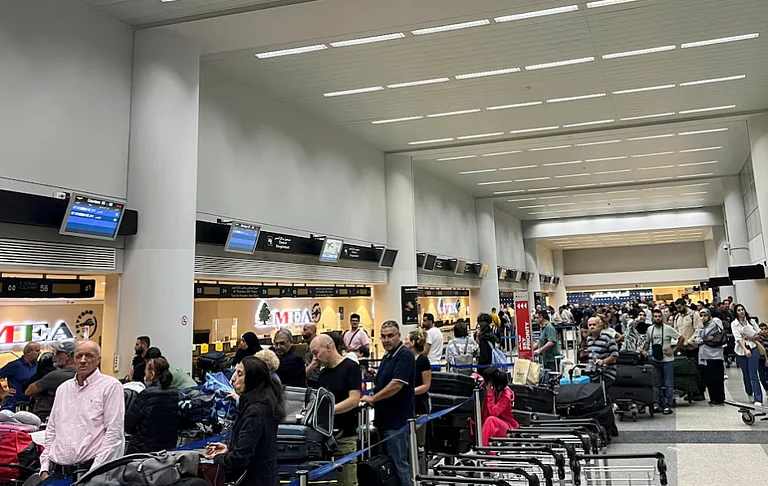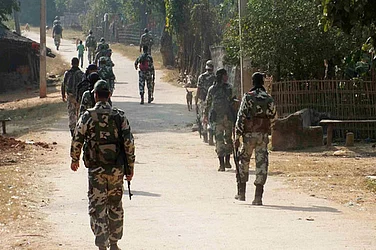It was well known since 2014 that the current Prime Minister has had his eyes on Sabarmati Ashram. His attempt, as Chief Minister of Gujarat, to create an alternative memorial for Gandhi in Gandhinagar—Mahatma Mandir—with all its technological razzmatazz failed to attract people away from the simple, but evocative Sabarmati Ashram, the abode of Bapu on the banks of the Sabarmati River. But even he was forced to bring visiting Heads of State to Sabarmati Ashram, instead of the Mahatma Mandir.
Sabarmati Ashram emerged out of a social boycott faced by Bapu and his commune at Kochrab by the Savarna community of Ahmedabad because Bapu had invited a Dalit family to come and live with him in the commune. Bapu realised that if he wanted to experiment by creating a self-sustained, self-reliant, unconventional and ideal community of people, he had to move out of the restrictive community of the city. So after an extensive search, Bapu chose the barren land on the opposite bank of the Sabarmati—a tract of rocky land situated between a prison and a crematorium. Bapu said it was ideally located for a Satyagrahi since his/her goal was to defy authority and face the consequences or die trying to achieve the objective—in this case, freedom, and so the prison and crematorium would provide a constant reminder and encouragement to the inmates.
The ashram land of over 120 acres was purchased with his personal money and some donations and was registered in his and his nephew’s name. Later, he formed a trust and the ownership of the land was transferred to the trust. Bapu led the first non-cooperation movement from here. In a courageous manner, defying his associates, Bapu withdrew the agitation because of a violent incident, where a few policemen were murdered by an enraged mob of Satyagrahis at Chauri Chaura. Many believed that the agitation was on the verge of success. Bapu was arrested from Sabarmati Ashram on charges of sedition, convicted and sentenced. He came back to the ashram after he was released. It was here that the entire swadeshi village industry model was developed and khadi, the ancient hand spun and hand woven fabric, was revived and popularised. Kasturba Gandhi, wife of the Mahatma, was the first to master the art of khadi spinning; she produced the highest quality of fine khadi yarn and became the ashram’s first master spinning instructor. She would beat Bapu hands down at spinning fine khadi; they often competed with one another. Post-South Africa and the Kochrab Ashram, Sabarmati Ashram and their humble abode, Hriday Kunj, were Kasturba’s home for over a decade. It was here that she raised her grandchildren, her eldest son Harilal’s children. Hriday Kunj became the beating heart of the freedom movement and of the revival of village empowerment through enterprises.

In 1930, Bapu decided to revive the freedom movement, Satyagraha, and proposed the Namak Satyagraha. He decided that he along with a hand-picked bunch of ashram inmates would march to a seaside destination and break the inhuman Salt Tax imposed by the British on Indians. Bapu corresponded with the Viceroy and sent him a charter of demands including home rule; the abolition of the salt tax; prohibition; and, castigated the Viceroy for his huge salary and ostentatious lifestyle. He gave him an ultimatum and warned that if the Viceroy did not implement his demands by a certain date, Bapu would launch a nationwide movement of non-cooperation. The Viceroy chose to ignore Bapu’s demand and the rest, as they say, is history.
On March 12, 1930, as dawn broke over the Sabarmati, Bapu marched out of the ashram at the head of a column of 78 hand-picked marchers; two more were to join them the next morning. They marched for the next 26 days covering a distance of 241 miles, and on the evening of April 5, arrived at Dandi, a seaside hamlet on the outskirts of Navsari. The next morning, Bapu picked up a handful of saline mud and symbolically broke the Salt Law, a signal for the nationwide Namak Satyagraha to begin. A tola—10 ounces of salt—was distilled from the fistful of mud picked by Bapu and was auctioned at a public meeting in Ahmedabad. A merchant bought it for the then princely sum of Rs 1,100.
In the early 1930s, Bapu grew agitated at the brutal manner in which the British colonial government was attempting to crush the Namak Satyagraha. To protest against the brutal persecution of the Satyagrahis, confiscation of their farms and homes along with all their belongings and rendering them destitute, Bapu decided to surrender the Ashram to the British since he was spearheading the revolt. After a lot of persuasion, his associates were able to convince him not to do so. Finally, Bapu decided to hand over the Ashram to the Harijan Sevak Sangh with a caveat that the property should be used to settle Dalit families; create an enterprise for the community’s welfare; and, should be utilised for this objective perpetually. He then quit the Ashram, vowing not to stay at the Ashram till he had won freedom for the land he loved.
This is the history of Sabarmati Ashram and its importance as a memorial to Bapu and to the nascent freedom movement. That’s why it must be preserved in its pristine condition.
After Bapu’s murder, several changes occurred, and the Ashram passed from one organisation to another—Harijan Sevak Sangh, Rashtriya Gandhi Smarak Nidhi, the Sabarmati Ashram Preservation Memorial Trust, and a couple of other organisations—and they all became custodians of bits and pieces of the Ashram land. There is a question mark on who is the legitimate custodian of Sabarmati Ashram. If Bapu’s decision is considered supreme, then the Harijan Sevak Sangh would be the rightful custodian, and is bound to act in accordance with Bapu’s caveat. If all the changes are to be taken into consideration, then several trusts can claim custodianship.

This is where the trouble starts. Gandhian organisations, as a rule, are not on amicable terms with one another; many are at daggers drawn. It is easy for a third party to exploit the bad blood and capture the institution, and that’s what the Prime Minister and his supporters have done with Sabarmati Ashram. Cowardly and self-seeking trustees bent over backwards and allowed the government’s bulldozer to roll over them. The government succeeded beyond even their expectations; they had anticipated some resistance, but they faced none.
I have believed that Gandhian institutions and memorials should be insulated from governmental interference and definitely from takeover bids by the government. I find my voice to be in the minority. None of the trusts concerned was willing to stand by me to resist the attempts of the government. It is not as if the government has never helped Gandhi memorials. Whenever necessary, the government has funded and facilitated repair and restoration work at all Gandhi memorials. While doing so, the government has never attempted to supersede or sideline the existing caretakers. This is the first time that the government has taken over an ashram and ordered its custodians to stand aside. It sets a dangerous precedent. In a bid to save the autonomy of the Ashram, I approached the Gujarat High Court. Unfortunately the trustees of the Sabarmati Ashram Preservation and Memorial Trust (SAPMT) submitted an affidavit in court stating that they support the takeover of the ashram and its properties and permit the government to carry out demolition and remodelling activities as it sees fit. The trustees of SAPMT and the Harijan Ashram Trust have betrayed Bapu’s Ashram and sold out to the government—state and Central—for personal gains.
I am worried. The Central Government slyly took over the Gandhi Smriti, the former Birla House, in New Delhi, where a memorial to Bapu has stood since his murder on the evening of January 30, 1948. The hallways adjacent to the two rooms occupied by Bapu and his companions in January 1948 were adorned by large sepia prints of photographs taken by the iconic French photographer, Henri Cartier-Bresson. Large prints gifted by him to the memorial were taken by him in the immediate aftermath of Bapu’s murder and then his funeral the next day.
When I visited Gandhi Smriti in January 2020, I was shocked to see that the large prints had been removed and replaced by large TV screens randomly displaying images which were confusing and arbitrary. The sepia prints were not just a record of history; they were works of art by a maestro. They have been discarded on the whims of a person with no sense of history and no appreciation for art.
(Views expressed are personal)
Tushar Gandhi is the great grandson of Mahatma Gandhi





















